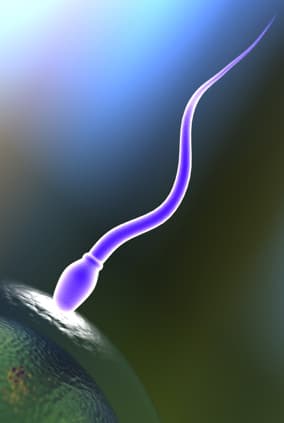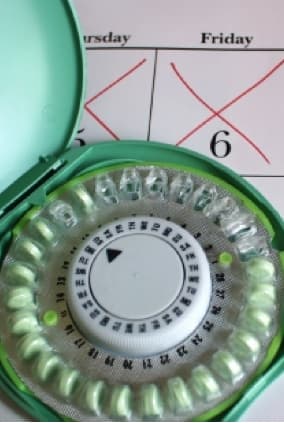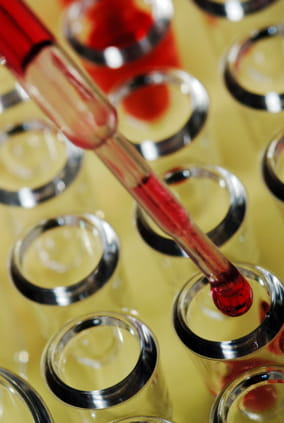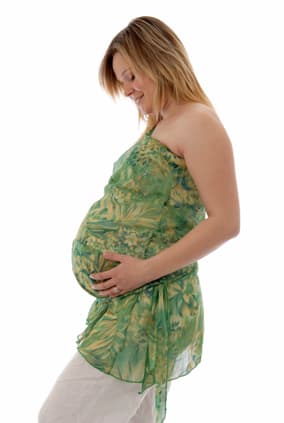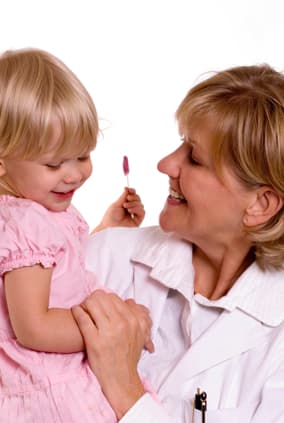
SIGNS OF FERTILITY
The following are the three primary fertility signs:
- Waking temperature
- Cervical fluid
- Cervical position
- Ovulation Pain (Mittelschmerz) – secondary sign
WAKING / BASAL BODY TEMPERATURE (BBT)
Body temperature changes are due to the increase of progesterone in your system. At the onset of ovulation, your body temperature will rise between 0.4°F and 0.8°F - or more. The physiological purpose of the temperature increase is to create a warmer, more fertile environment for the fertilized egg. A BBT thermal shift tells you that ovulation has taken place. Other factors that may increase your waking temperature include:
- Having a fever
- Drinking alcohol the night before
- Getting less than three consecutive hours sleep before taking it
- Taking it a substantially different time than usual
- Using an electrical blanket or heating pad
- Stress (by affecting your menstrual cycle)
HOW TO TAKE YOUR BASAL BODY TEMPERATURE
Your Basal Body Temperature can be taken orally with a basal digital thermometer. Ideally, a larger thermometer that registers from 96 to 100 degrees (in easy-to-read one-tenth degree increments) is recommended. Digital thermometers are also available.
Important: Your BBT temperature refers to a 'resting' or 'base' temperature. That means that your BBT must be measured prior to any physical activity, after at least three to four hours of sleep. Make sure that you read thermometer directions - and if you have any questions or unique considerations, consult your naturopath.
a) Taking Your BBT Temperature
Take your BBT temperature first thing each morning - as soon as you wake up. You must remain in bed (as physical activity can increase your temperature) and avoid eating or drinking or even moving. Insert the thermometer in your mouth and wait. Read the temperature to within 1/10 of a degree and record the reading.
b) Charting Your BBT Temperature
Starting on day one of your menstrual cycle - the first day of your period - begin recording your BBT temperature using the chart. Each morning, record your temperature. Plot each day's BBT on the graph. Your temperature rise may be sudden, gradual, or in steps. The pattern may vary from cycle to cycle.
c) Predicting Ovulation
For most women, 96 to 98 degrees is considered normal prior to ovulation and 97 to 99 degrees after ovulation. By charting the differences - in one-tenth degree increments - you can determine when ovulation has taken place.
Typically a rise of at least 0.4 to 0.6 degrees will take place at ovulation, though for different women the temperature increases may be sudden or gradual. Over time, charting your BBT will help you predict ovulation.
BBT Limitations in Ovulation Prediction
BBT charting only tells you when ovulation has already occurred - and is therefore important for predicting general patterns. To predict ovulation, cervical mucus is a very valuable method.
CERVICAL MUCUS
Cervical fluid is to the woman what seminal fluid is to the man. Fertile cervical fluid provides an alkaline medium to protect the sperm from an otherwise acidic vagina. It provides nourishment for the sperm, acts as a filtering mechanism and functions as a medium in which to move.
Directly prior to ovulation, cervical fluid will increase greatly, and now the mucus will be semi-transparent, slippery, with the consistency of "raw egg white". This is your most fertile period and ovulation will take place at about this time.
Factors that can potentially mask cervical fluid are:
- Vaginal infections
- Seminal fluid
- Arousal fluid
- Spermicidal and lubricants
- Antihistamines
Cervical Mucus Analysis in Ovulation Prediction
Pre-Ovulation
Check your cervical fluid the first day after menstruation has ended and check it at least three times a day. Following the menstrual period, there is a feeling of dryness. There will be no visible mucus. Gradually, more mucus will accumulate - yellow, cloudy, or white in color and sticky to the touch.Approaching Ovulation
As you approach ovulation, your cervical mucus will increase. First, there will be a moistness or stickiness to the mucus, as well as a white or cream-colored appearance.During OvulationAt ovulation, the quantity of mucus will increase greatly and the appearance will resemble "egg whites", often semitransparent. The texture will become increasingly slippery and 'stretchable'. This is your most fertile time.
Following OvulationFollowing ovulation, the slippery quality of the cervical mucus will decrease and the mucus will become sticky and cloudier. Post-ovulatory dryness will also ensue.
CERVICAL CHANGES
When conducting any self-exam, make sure that your hands are clean. As with ovulation testing and BBT charting, examination of the cervix should take place at the same time every day. Gently insert one or two fingers into your vagina - and by reaching back you should be able to feel your cervix.
During the exam, ask yourself the following questions (but remember, it make take time to "learn" about your body - the positions and feel of your cervix throughout your cycle):
- Is the position of the cervix relatively low (easy to reach) or high (less easy to reach)?
- Does the cervix feel relatively soft or firm?
- Does the opening of the cervix feel open or closed?
- Is the cervix dry to the touch - or relatively moist - or very moist?
Prior to ovulation - during the first half of your cycle, the cervix will feel relatively firm (like touching your nose) and dry to the touch - and the position of the cervix will be low in your vagina (easy to reach). The entrance of the cervix will feel closed.
However, as you approach ovulation, the cervix will become increasingly soft and will increasingly moisten in order to create a more fertile environment for the sperm. The entrance of the cervix will feel open and begin to lift.
At the highest point, the cervix may be a bit difficult to reach and the entrance of the cervix will increase in size. The feel of your cervix will be softer - like touching your lip. At this point, you are at your most fertile time. Remember SHOW (soft, high, open and wet).
Following ovulation, the cervix begins to return to a firmer state and the entrance will begin to close. Also, the position of the cervix will again drop and become easy to reach.
SECONDARY FERTILITY SIGNS
Ovulation signs include pains, or Mittelschmerz, which occur right around the time you ovulate. The pain is centered around your lower abdomen, and may last anywhere from a few hours to days. Ovulation pains can be used as a secondary fertility sign-that is, taken with the many other symptoms of ovulation, these pains will create a more accurate representation of your fertility. These symptoms include:
- Mid cycle spotting
- Pain or achiness around ovaries
- Increased sexual feelings
- Fuller vaginal lips
- Abdominal bloating
- Water retention
- Increased energy level
- Heightened sense of vision, smell, and taste
- Increased sensitivity in breasts and skin
- Breast tenderness
Related Articles
Acne
Acne is a common skin condition with a prevalence of 80% in female and 90% in male teenagers. It is caused by a disorder of the oil glands that result in clogged pores and outbreaks of lesions commonly known as pimples. Risk factors: poor diet, excessive sugar, trans fats and processed foods.
Candidiasis
Candida overgrowth in the gastrointestinal tract is now becoming recognized as a complex medical syndrome known as chronic candidiasis or the yeast syndrome. Symptoms include: Multiple food allergies, or allergic to all foods( pan allergic), alternating diarrhea with constipation.
Chronic Fatigue
Chronic Fatigue Syndrome (CFS) is described as a severe, debilitating fatigue, lasting at least six months (of new and definite onset), associated with at least four of the following symptoms: impaired memory or concentration, sore throat, muscle pains, joint pains, unrefreshing sleep and post-exertion malaise.
Irritable Bowel Syndrome
Irritable bowel syndrome (IBS) - a diagnosis of exclusion, this condition is often misdiagnosed. Severe food intolerances / allergies may exhibit symptoms that are similar to Irritable Bowel Syndrome such as pain, cramping, gassiness, sudden bouts of diarrhoea, and constipation.


